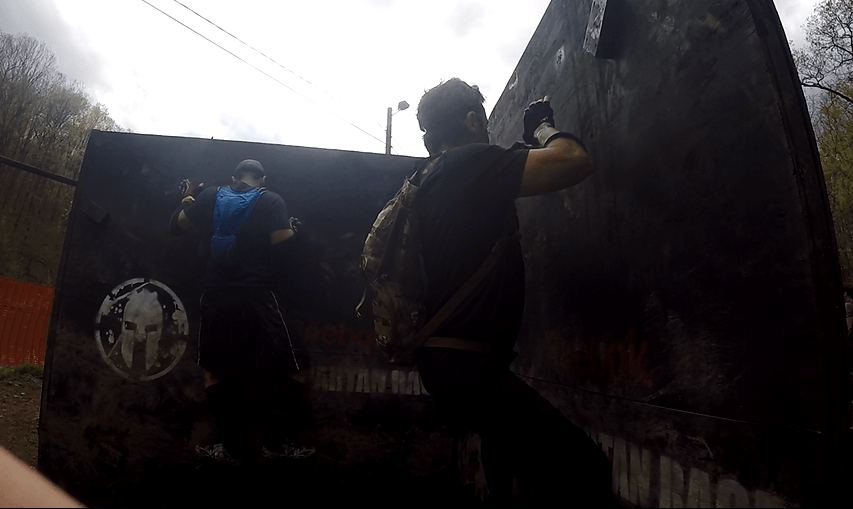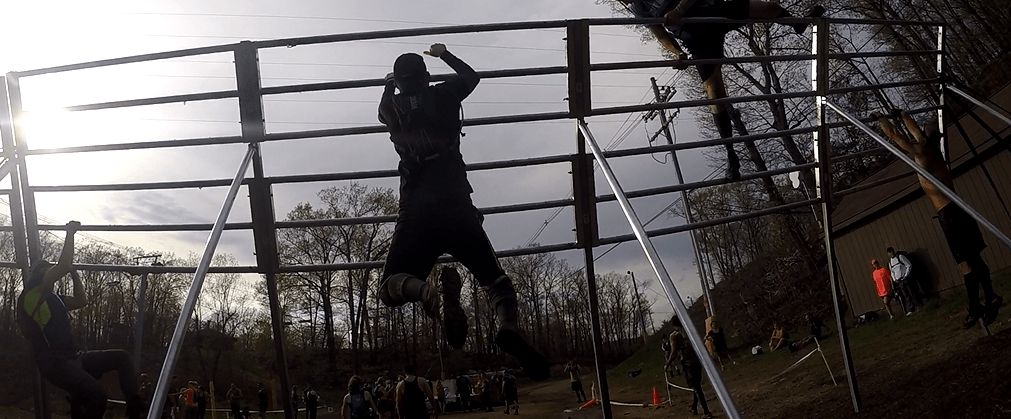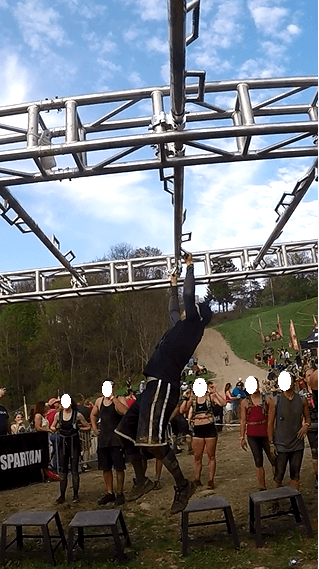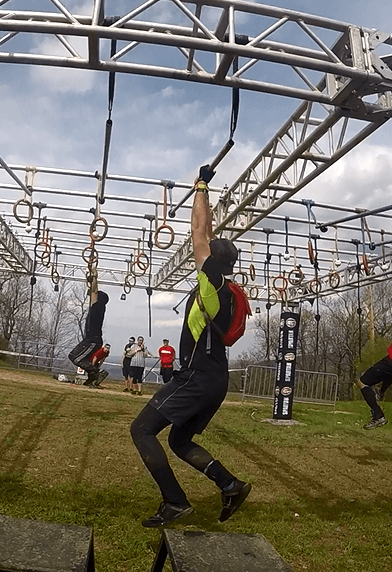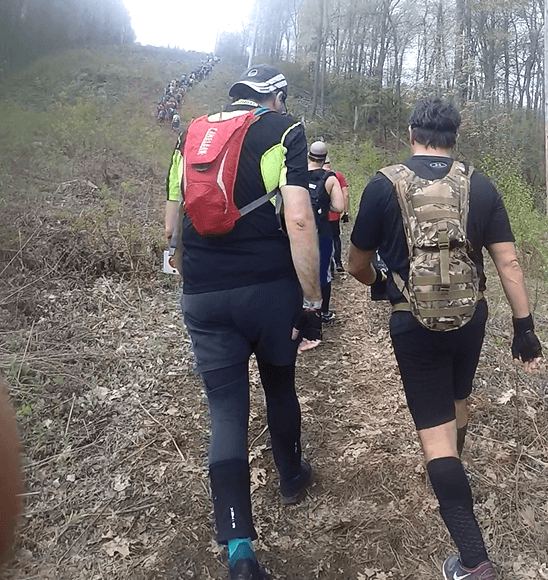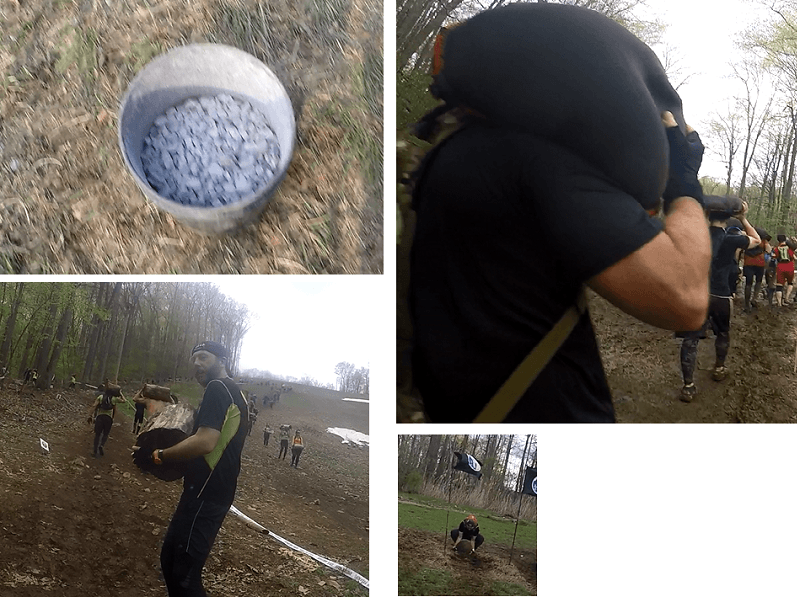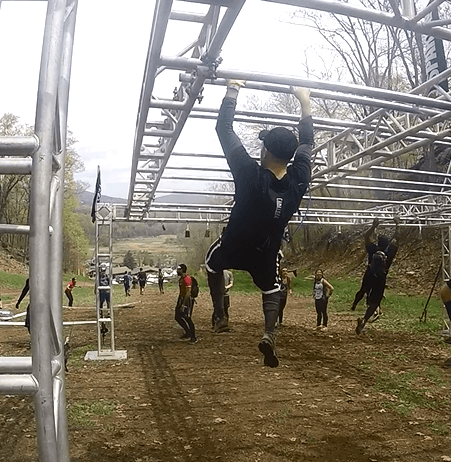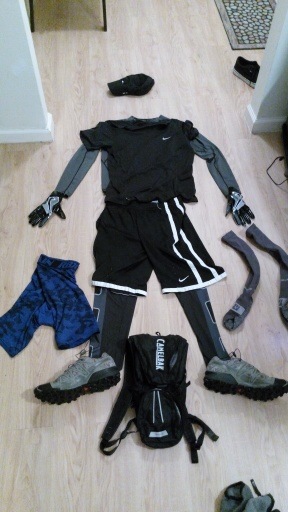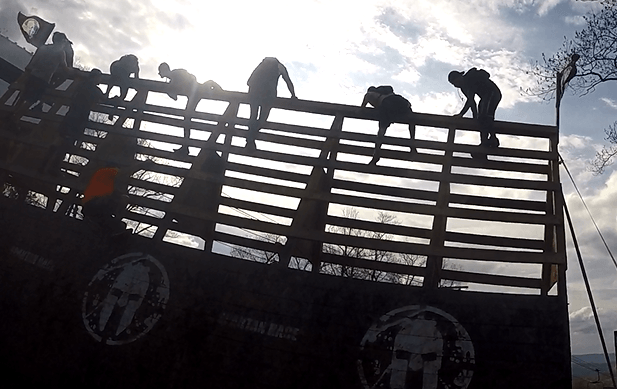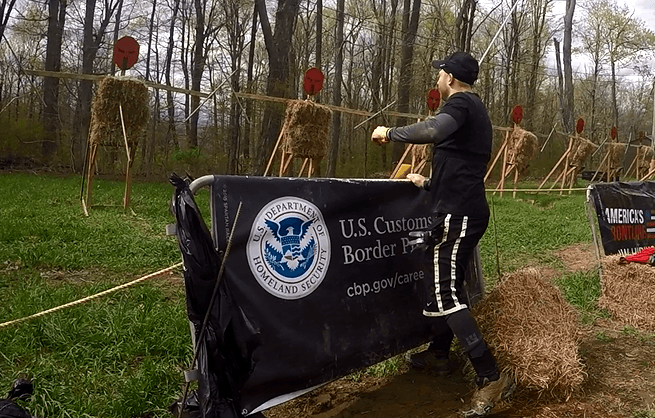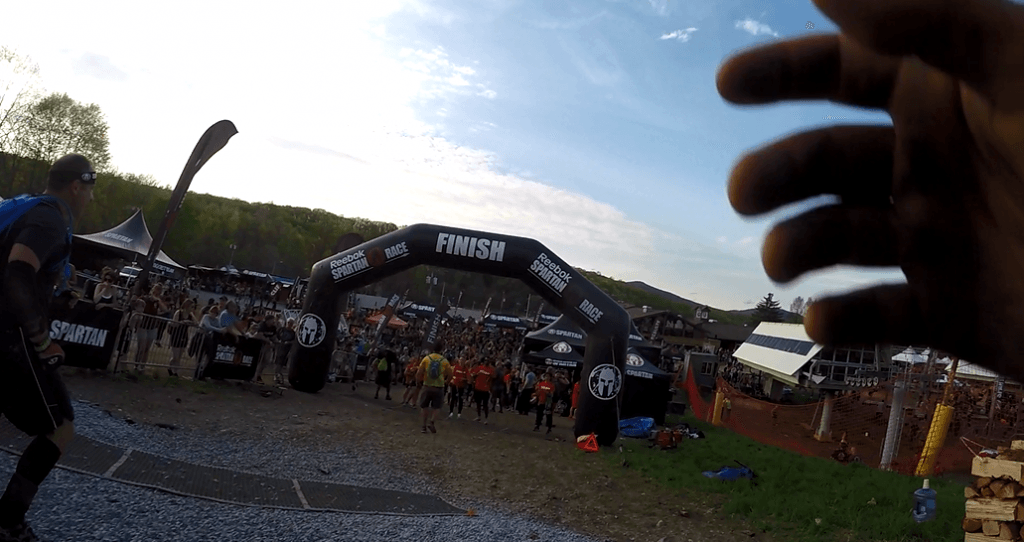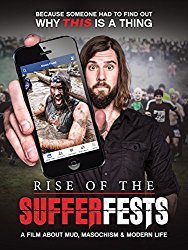Of the 3 times now I’ve done the Spartan Race, 2 of those times, I’ve had to “cheat my way” through the Z wall. But on the third, I figured it out, and I’ll show you how.
The first time, it was so slippery due to the rain, on the next, I was just too tired to bother with it, so I cheated by grabbing onto the top of the it, but on the last race, I finally decided to do it right, and surprisingly, I did, and to be honest, it’s not that difficult as long as you focus on the right approach to getting through it!
So what is the Z wall?
Well it’s literally a tall wall, about 7-8 feet high that is shape in the form of a Z. Each side of it has 2 levels of wood pieces sticking out of it, about an inch each. There’s 3 sides you have to cross.
The first 2 are generally easy if you follow a few easy steps below, but the last part, the switch to the third side is where even the most experienced people can fall off. You can’t see the third side from this picture, but it’s there.
Now the pieces of wood that are sticking out of this thing are important. One level of these wooden pieces is meant to have you hold onto with your hands and feet. And the obstacle itself is meant for you to go across without stepping on the ground or the top of the actual wall.
Think of yourself trying to scale the side of the building with a short short area to hold onto, that’s how this obstacle is designed, only (thankfully) it’s less than a foot of the ground.
The basic idea of getting through it:
The main thing I had figured out pretty early is that the closer you place your body to the wall and by that I mean basically stick your entire body to it, the less chances you’ll have that you’ll slip off it. At the same time though, you may feel as though you’re falling back while this is happening.
The wooden pieces that stick out are easy to grab though, but very hard to hold onto since they are very slippery, so you really have to rely on this sticky body position as your main source of support.
Step 1: Begin the obstacle by stepping onto the first part of the wall. But don’t rush through it, just base yourself against the obstacle and feel what it’s like to have the balance.
Step 2: Now this is key…obviously you have to scale the obstacle, but to do that, you have to move across and grab the wooden pieces sticking out. Now depending on your preference, you can either pass onto the next wooden piece using your legs first or your hands.
Personally, I found using my legs first really helped me save a lot of energy and put all my body weight as I was scaling this.
But whatever you choose that’s comfortable, make sure that’s exactly what you keep doing when you keep moving across. Don’t switch it up, because your body will very quickly get used to the way you’re passing through it, so you’re basically going to get into a “flow”. Just don’t ruin that flow is the main point of step 2.
Step 3: So that’s what I did, I established a good base, then used one of my feet to get onto the next wooden piece, then transferred my hand over the next wooden piece as well, then moved my body farther across the wall.
Then I repeated the same leg first, followed by the hand, then move my body over approach.
Step 4: Now if you can get into this flow, it’s going to feel very easy, until you reach the LAST part of this obstacle which is the last wall before you get to hit the bell and officially finish it.
In the picture below, my uncle is the person who attempted to cross this but failed. When I did it, I passed it because I took my time with it. Remember in step 1, I said basing yourself is really the hardest part of this obstacle and if you can master it quickly, it’ll make it easy.
The part where you switch to the last part of the wall is where this base will be tested. When you reach the part where you have to cross over to the other side of the obstacle, make sure to again, either pick out your foot or hand.
Step with your foot to the other side and try to feel out where the next wooden piece is. OR use your hand to feel it out. Personally, I think you get more range with the foot so I found it easier to do that.
But when you feel it out, do not lean over or place the weight on the “scouting foot or hand” that’s trying to find the wooden piece, otherwise, you’ll slip and fall. Instead, tread carefully with either your hand or foot, until you find it, then put your foot’s weight on it or hand.
In any case, do NOT move your body over to the other side until you have 3 things:
- A firm foot in place on the wooden piece.
- A firm hand grip on a wooden piece as well.
- And finally, as you move across to the other side, stay glued to the obstacle.
I’m telling you, odds are you will not feel very well balanced if you JUST rely on your hands and feet and if you angle away from the wall too much, that’s it, you’re falling off. Here’s a good illustration of how to get over to the next side correctly:
The 2 things you really need to complete this obstacle:
1) Technique. That is explained in the steps. The technique is what will make this thing much easier. In fact, for many of the obstacles in the Spartan Races, you’ll need techniques.
But with this obstacle, take your time, the faster you try to do it, the more likely you’ll fall over. Remember that base I talked about, it’s huge to alleviating the next thing you’ll need to have…
2) Upper body resilience, not necessarily strength. You’re going to be holding onto the wooden pieces for quite sometime and most of your weight is going to be placed on your feet so the only thing you’ll need to do is be able to maintain as much of a firm grip as possible with your hands for as long as possible.
For that upper body strength isn’t as big as hand resilience here.
Need to practice it? Here’s something you can try:
It is very difficult to reenact this obstacle anywhere, so one thing I can suggest, and it’ll sound ridiculous is standing on your tiptoes against a wall at your home, preferably in a hallway. Then raise your hands and go across a few feet just to feel what it’s like to hold that base I mentioned so many times.
You’re going to see and feel very quickly how difficult that is. Well that’s the feeling you’re going to experience on the Z wall come race day. If you can get used to that feeling, and can manage to base your body against the obstacle comfortably, consider most of the obstacle’s difficult handled!
I really hope these tips are going to help you on this obstacle if you decide to try the Spartan Race because trust me, it will show up, generally after the second part of the event, when you’re tired.
Another good tip: Wear decent shoes so even if it’s wet, something with decent traction should help your feet avoid slipping. Here are the shoes I wear for every mud run I do now.
